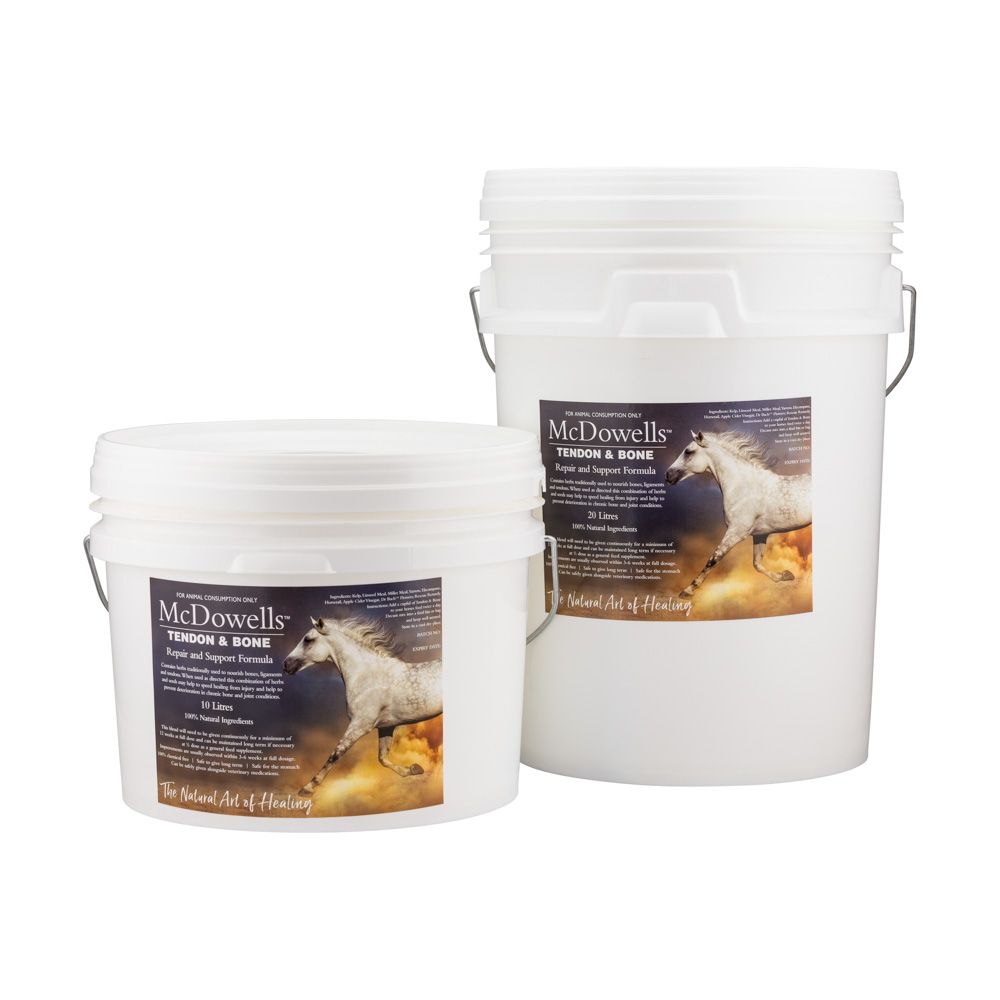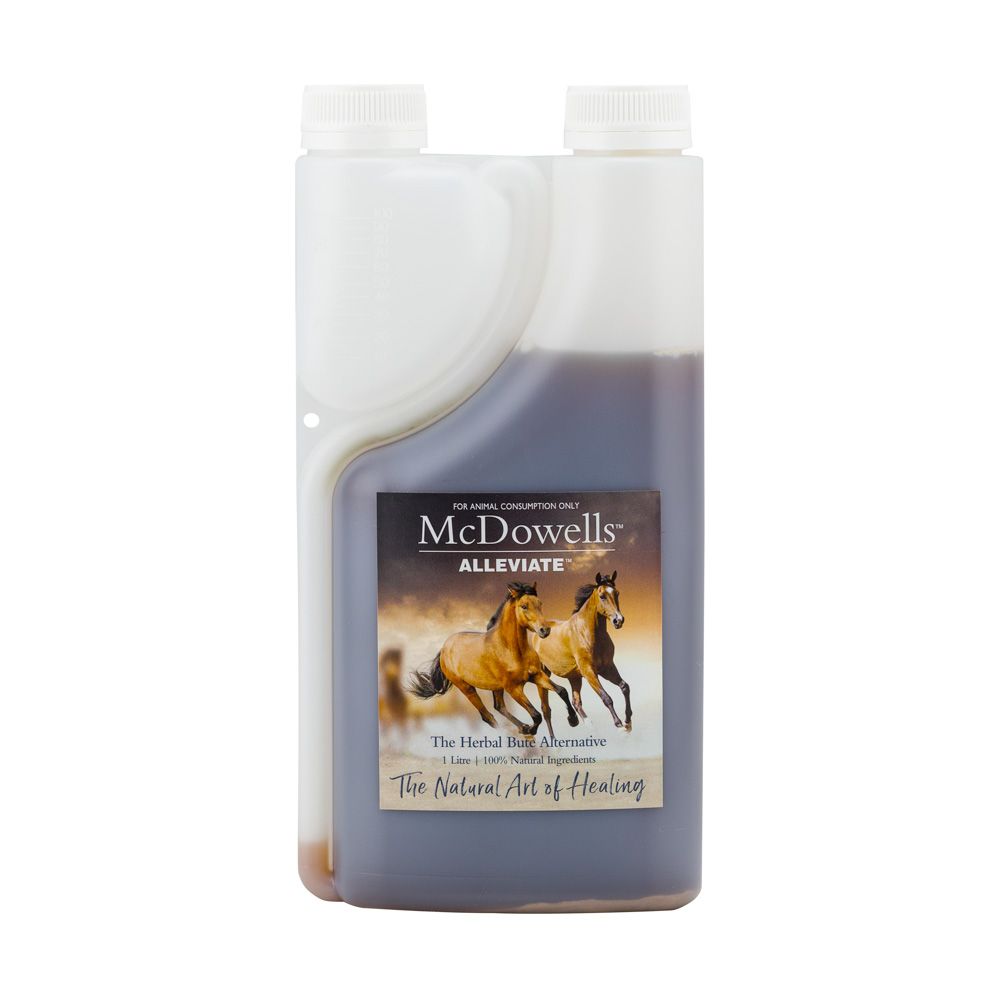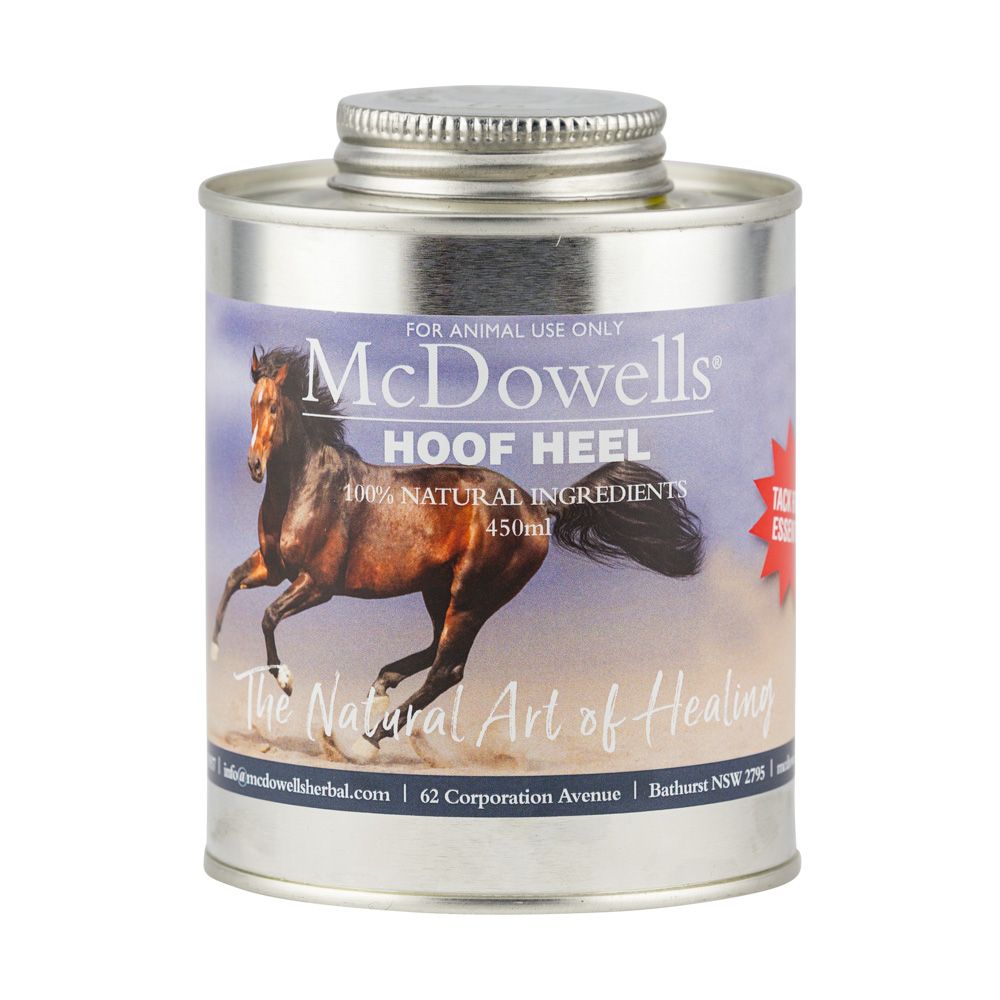"Three months ago my 15 year old Arab gelding was diagnosed with ringbone in his near foreleg. At first he was very lame and had to be on Bute and paddock rest. He had a course of Pentosan and a Cortisone injection into the joint. He is now rideable but at the trot he is slightly lame occasionally. Are there herbs or natural therapies that would help?"

Ringbone is just one of the conditions in horses which really result from poor circulation down through horses legs and the resulting difficulty in healing conditions which can really be relatively minor when they first occur. Ongoing degeneration of bone and joints occurs If the horse is not provided with a particular nourishment that encourages bone repair.
All horses are prone to such problems because their design as a flight animal was to minimise the weight and bulk of their limbs, rather like alloy rims and low profile tyres on a sports car.
Because the structures within their lower limbs are not continuously bathed in blood, as our ankles are for example, a relatively minor impact, jarring or torsion injury can result in bone bruising and inflammation which can be extremely slow to heal and even result in further degenerative and scarring processes which simply would not occur if there were more blood supply available for healing. Ringbone is a process where a ring of bone tissue scarring develops following such injuries.
Robert N. Oglesby DVM concludes in an article on the subject of Ringbone that; "...most ringbones I have seen are painful and untreatable in the long run. Early, you can keep them usable with bute and injections of cortisone but the more you use them the worse it gets"
I beg to differ with this view...
The two most obvious herbs to think about with any such bone injury or lameness are arnica and elecampane.
Arnica works almost as if by magic to promote circulation toward and away from any site of bruising whether in soft tissue, connective tissue or bones. The moment Arnica is applied externally to any such injury it starts to improve the local circulation and carry away debris resulting from injury which can lead to further complications and bring more restorative fluids to the area to facilitate healing.
Elecampane has been used for literally thousands of years to speed up bone healing and encourage normal repair tissue to grow as needed rather than scarred tissue.
Just because modern Veterinary Medicine and its supporting pharmaceutical industry cannot see how to deal with Ringbone does not mean that it is untreatable and it will inevitably get worse and worse over time.
Our Tendon and Bone repair contains Elecampane which is one of the key herbs for repairing damage and reducing scar tissue. I also add Equisetum to the mixture to help breakdown spurs and bony growths that occurs in cases of ringbone.
This product has been formulated especially for our overseas clients. You will need to source your own ground millet and linseed and kelp. Add 40mls of this liquid extract to your ground millet and linseed and one heaped teaspoon of kelp which you then add to feed. If you have only been able to find unground millet and linseed then it is advisable to mill this in a coffee grinder first.
This combination of comfrey (contains Allantoin) along with kelp granules, ground linseed, ground millet, yarrow and the Bach Flower Rescue Remedy promotes the re-growth of attachment points and the re-tensioning of stretched or damaged ligaments.
Elecampane is a stimulant to fibroblast and osteoblast activity due to its Allantoin content. A horse from a line susceptible to tendon or bone problems should be supplemented with small doses of this mixture after weaning and again as a yearling for a few months each time before putting it into work, thereby avoiding a whole career dogged by injury.
As a professional herbalist I make up a simple internal treatment containing herbs and seeds which provide the ideal nutritional requirements for healthy bone healing along with herbs to stimulate the healing including Elecampane, Yarrow and Kelp. Externally I make up a range of creams and oils containing Elecampane and Arnica and other herbs in extract and oil form to apply directly to the affected area.
On your own you could make up a poultice containing crushed fresh elecampane leaves mixed into Linseed Oil and you could add in a little arnica ointment while stirring it all up. If this poultice was held in place with a bandage for several days at a time and then replaced regularly you would be seeing a positive response and your horse would be much less likely to go lame within 6 weeks.
Devils Claw is one of the anti-inflammatory herbs and there is no danger in giving a small amount over an extended period but I would not use too much. A combination of White Willow, Devils Claw, Guiacum, Burdock, Maritime Pine, Rosehips and Yarrow is what I use in place of Bute is a much better and more balanced mix, more effective and less likely to cause upsets.
I personally do not recommend Glucosamine and MSM as I feel Tendon and Bone formulation is far superior however I do have clients who have reported some benefits from this approach.
I am very uncomfortable about steroid injections as they do not even pretend to provide benefits over the long term, basically like Bute they are providing short term comfort while hoping that nature will heal the problem. I would rather assist nature in its task than bear the cost, or risk the side effects, of intrusive drugs such as these.
I hope this explanation helps you with your decisions as to how to manage your gelding's ringbone.
Ongoing degeneration of bone and joints occurs If the horse is not provided with a particular nourishment that encourages bone repair. Our Tendon and Bone repair contains Elecampane which is one of the key herbs for repairing damage and reducing scar tissue. I also add Equisetum to the mixture to help breakdown spurs and bony growths that occurs in cases of ringbone.
This product has been formulated especially for our overseas clients. You will need to source your own ground millet and linseed and kelp. Add 40mls of this liquid extract to your ground millet and linseed and one heaped teaspoon of kelp which you then add to feed. If you have only been able to find unground millet and linseed then it is advisable to mill this in a coffee grinder first.
This combination of Comfrey ( contains Allantoin) along with Kelp Granules, Ground Linseed, Ground Millet, Yarrow Herb and the Bach Flower Rescue Remedy promotes the re-growth of attachment points and the re-tensioning of stretched or damaged ligaments.
Elecampane is a stimulant to fibroblast and osteoblast activity due to its Allantoin content. A horse from a line susceptible to tendon or bone problems should be supplemented with small doses of this mixture after weaning and again as a yearling for a few months each time before putting it into work, thereby avoiding a whole career dogged by injury.
RE Dosage: I suggest for the AIH an initial loading dose of 20mls x 2 a day for two weeks and then reduce back to 10mls x 2 a day thereafter. 1 litre bottle will last 6 weeks at the 10mls dose.
This treatment has evolved from a consideration of the dangers of administering phenylbutazone (Bute), routinely, to horses sensitive to its side effects.
My prescriptions are based on; White Willow Bark and Devil's Claw as anti-inflammatory agents; Guaiacum as a lubricant, and Burdock as a blood cleanser for Rheumatoid processes as well as Pine Bark, Rosehips, Elecampane and Yarrow in a Vinegar Base supporting healing. The Bach Flowers Honeysuckle, Vine, Walnut and Rescue Remedy are also included.
All these herbs not only reduce inflammation and pain but assist in the healing process which will help reverse the underlying condition completely. These formulations may be used safely for both emergencies and in the long term for comfort. They do not swab and they do assist other equine herbal healing programs
Hoof Oil ($82.00 500mls) https://shop.mcdowellsherbal.com/natural-alternative-medicine-horses/biomechanics-support/hoof-oil.html
This oil-based treatment is a mixture of herbal oils and extracts which heats and brings circulation to all tissue and bone in the area. Also assists to ease pain associated with Ringbone Founder, Pedal Osteitis, Navicular Disease and Sesamoiditis.
Suggested feeding per day, spread over the two feeds. (This would depend on the energy requirements – the ratios suggested here are for low level / paddock rest) , I am also against feeding Soy products , which are usually GMO. New studies are showing that soy is contributing to Insulin resistance in animals..
On Bone and Ligament health
Oats and Millet - Millet and Oats both contain especially high levels of organic silica compounds as well as carbohydrate and many other minerals. As Oats can be too hot for some situations, I would suggest that a daily cup of Millet as a feed supplement is sufficient to ensure all the silica required to produce tough bones and to aid in recovery from injury. Silica is the key to balancing the calcium scaring that occurs in conditions like ringbone.
Linseed - is specific for strength and elasticity of ligaments and attachment points. A cupful (boiled and drained as too much raw linseed can be toxic) daily in a young horse's diet and regular application of raw linseed oil to the legs of young horses is the very best thing you can do for a growing horse to avoid a working life plagued by ligament injuries.
Both Millet and Linseed appear in my most popular formulation, which dramatically increases the speed of healing of all these sorts of injuries and prevents them from becoming chronic by completely resolving the injury.
Wintergreen and Arnica - are applied topically (applied externally), specifically to improve the circulation around healing, and these are important in assisting the healing process in limb injuries. Both wintergreen and arnica are ingredients I include in my creams and oils, but great care must be taken not to make them too strong if you are making them yourself. Slow healing in the equine hoof and lower limb is a direct result of its design and the fact that blood flow is very sparse. Application of Wintergreen and Arnica in anything but the tiniest amounts can cause blistering and counterproductive swelling in most areas of the lower limb. Also neither of these ingredients should be applied too close to open wounds as neither are antiseptic, and in the early stage of injury they can slow the healing by over stimulating blood flow near open wound.
Arnica dramatically reduces the swelling associated with all bruising. What is not commonly appreciated is that it also improves the circulation within the bones themselves and will therefore speed healing and to prevent a region of bone bruising area from becoming the site for arthritic problems or even bone cancer in later years.
Yarrow - is a herb which in extract form closes off blood vessels and acts as an astringent to help close up open wounds. Yarrow also stimulates bone marrow health and the production of red blood cells within the bone marrow again supporting the resolution at the most profound levels of damage or weakness following strain or injury.
White Willow Bark - is a herb containing natural salicylates and it is where the first aspirin was produced from. Of course, after humankind learned to produce the active ingredients chemically and were able to patent them, we were no longer interested in the herb, (which incidentally, as a whole herb produces no irritation to the stomach whatsoever). White Willow is a useful ingredient in a bone and ligament treatment program as it reduces inflammation naturally and will reduce stiffness and soreness to allow a more even exercise program during recovery without masking pain artificially, as do drugs.
Comfrey/Elecampane - in spite of occasional bad press, is the most important herb in speeding up healing of structural injuries. Mashed up Comfrey leaves mixed with Linseed Oil makes a poultice which will astound you with the speed at which ligament or bone injuries will completely resolve themselves when used in conjunction with the an appropriate selection of other herbs above.
Diet is important with any recovery program - As a general rule though, I like to feed : ( the aim of this feeding is to be clean- a clean diet is an anti-inflammatory diet) see this article on the horses GIT and Microbiota :
Chamomile flowers ( ½ handful per feed) Nervous system support- P, K, mg in balance- aids digestion and can assist with preventing stress colic
Rosehips (2T in 500mls of hot water, divide over 2 feeds) Kidney /liver support, iron, vit c Cobalt. -
2-3 cloves of garlic- sulphur, Vit A /E and various other vitamins and minerals that are excellent for immunity and heart/circulation health. Millet – Crushed- silica – bone/connective tissue support
Linseed- Crushed – Ligament /joint health
Magnesium supplement- a chelated one is required.
Kelp- ( not required if feed our liquid herbal extract)
Oaten chaff- soaking is a good idea
Speedi Beet – calcium/carbohydrates
Hay- oaten or meadow 24/7 or pasture- Calcium
I hope that you have found this information useful. If you have any further questions please don’t hesitate to ask.
Kindest Regards




